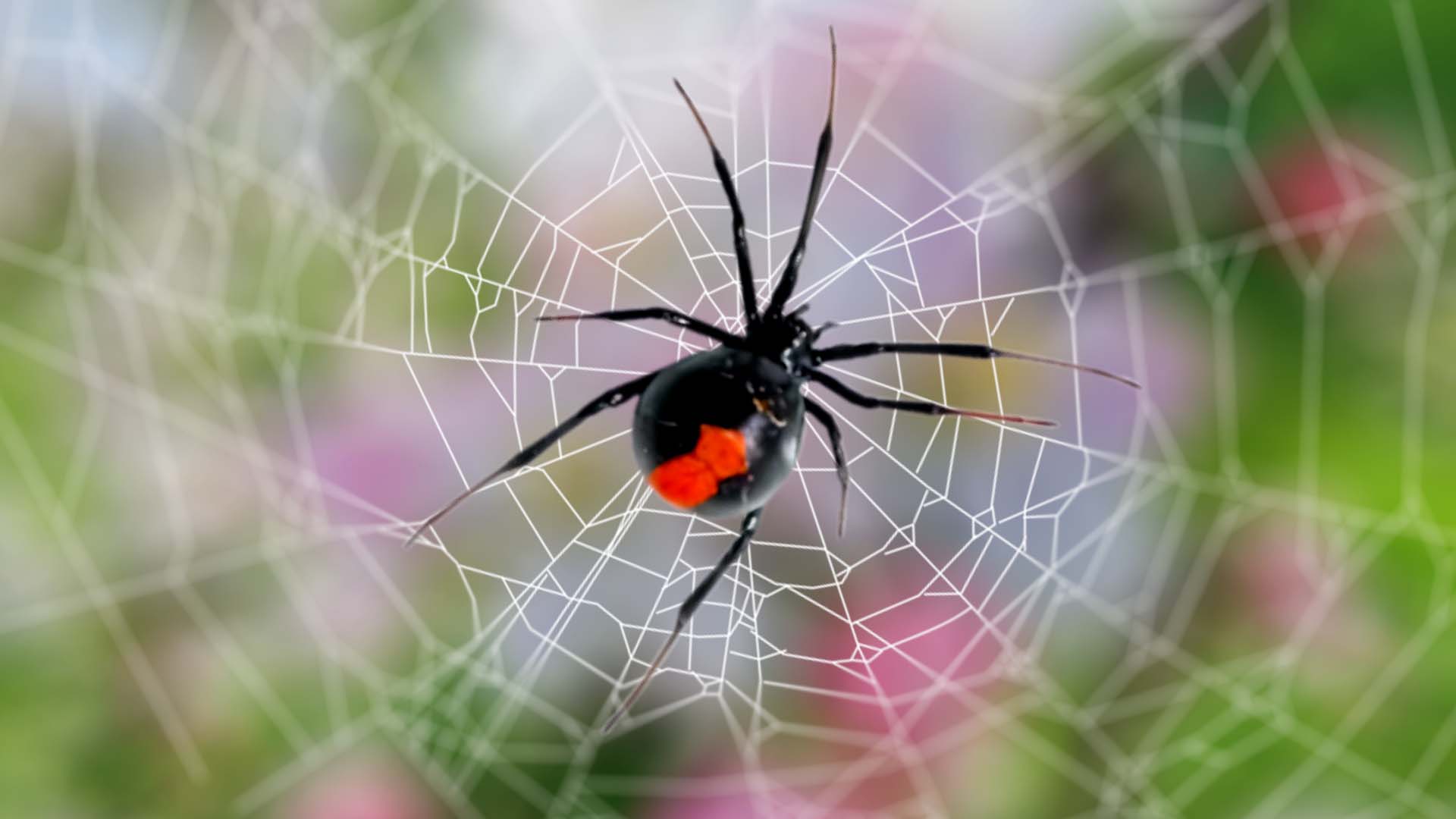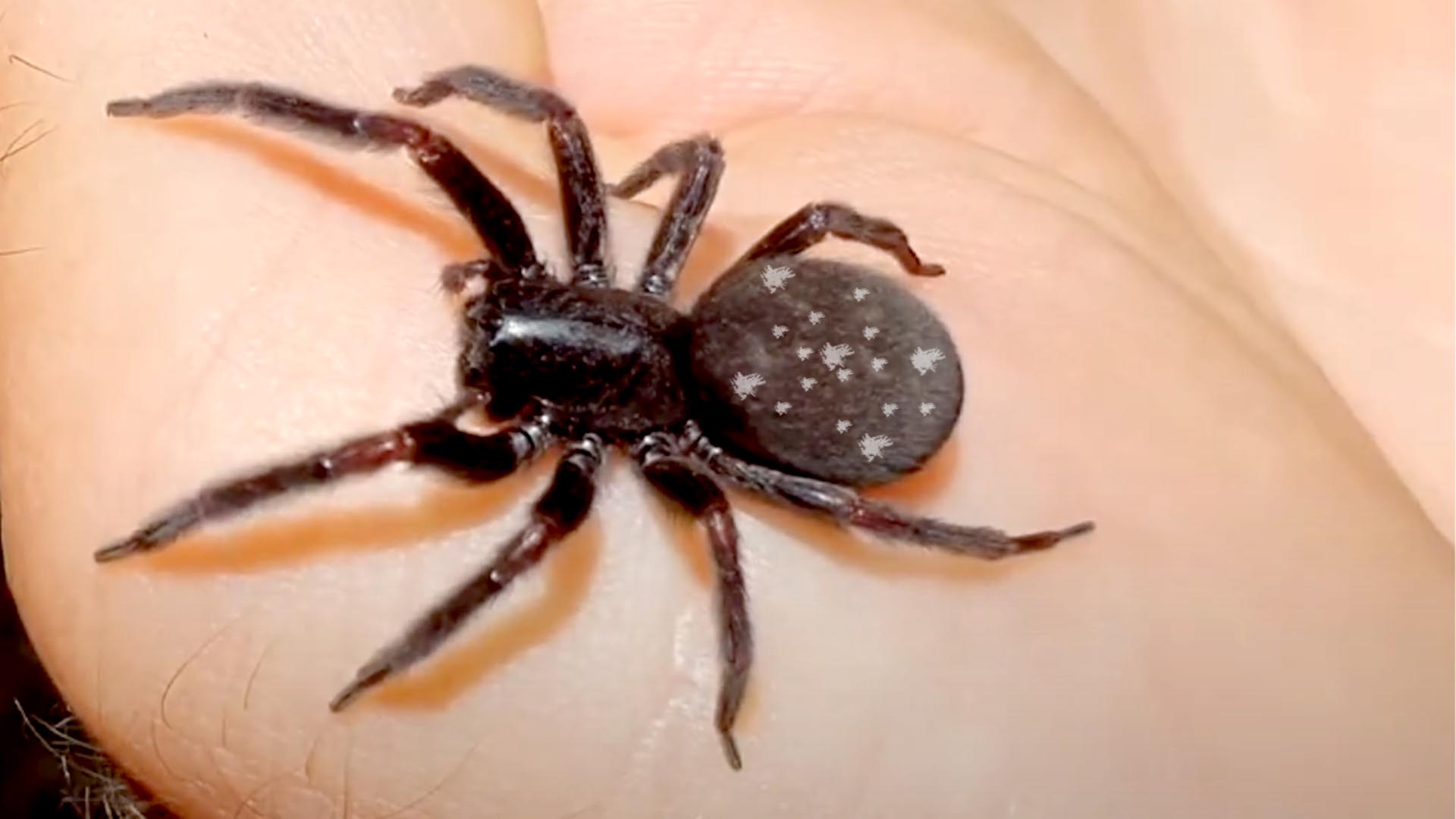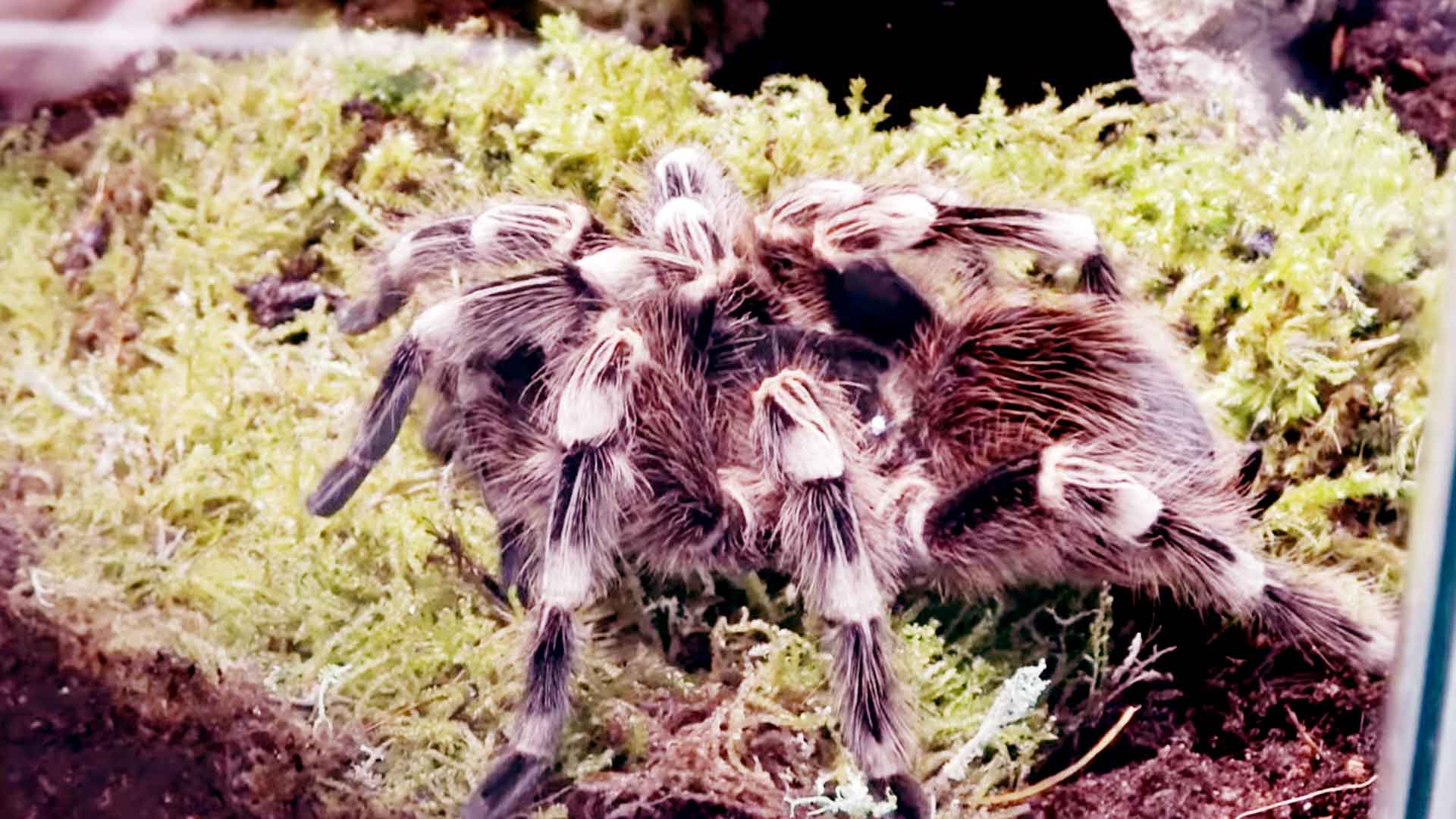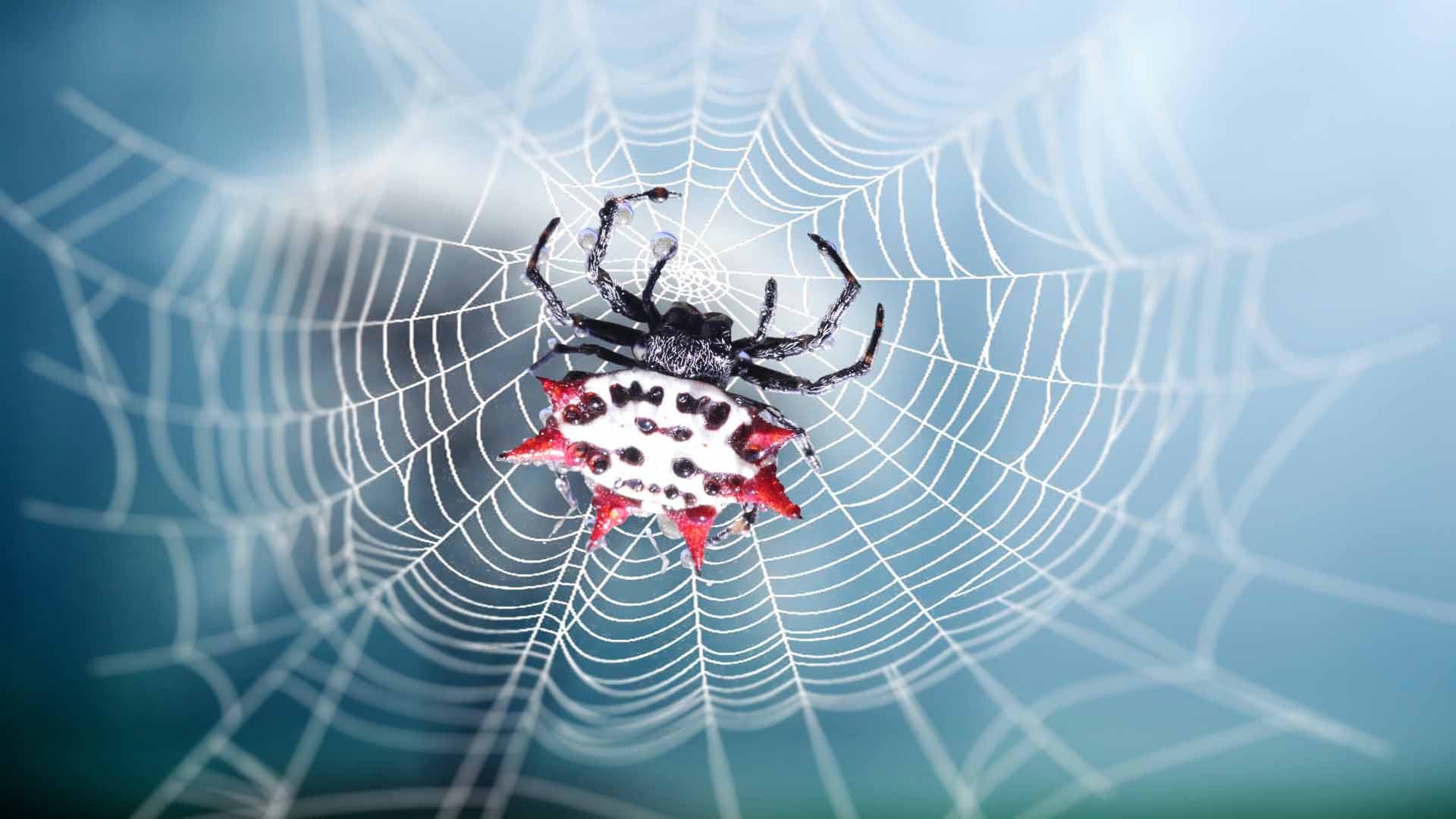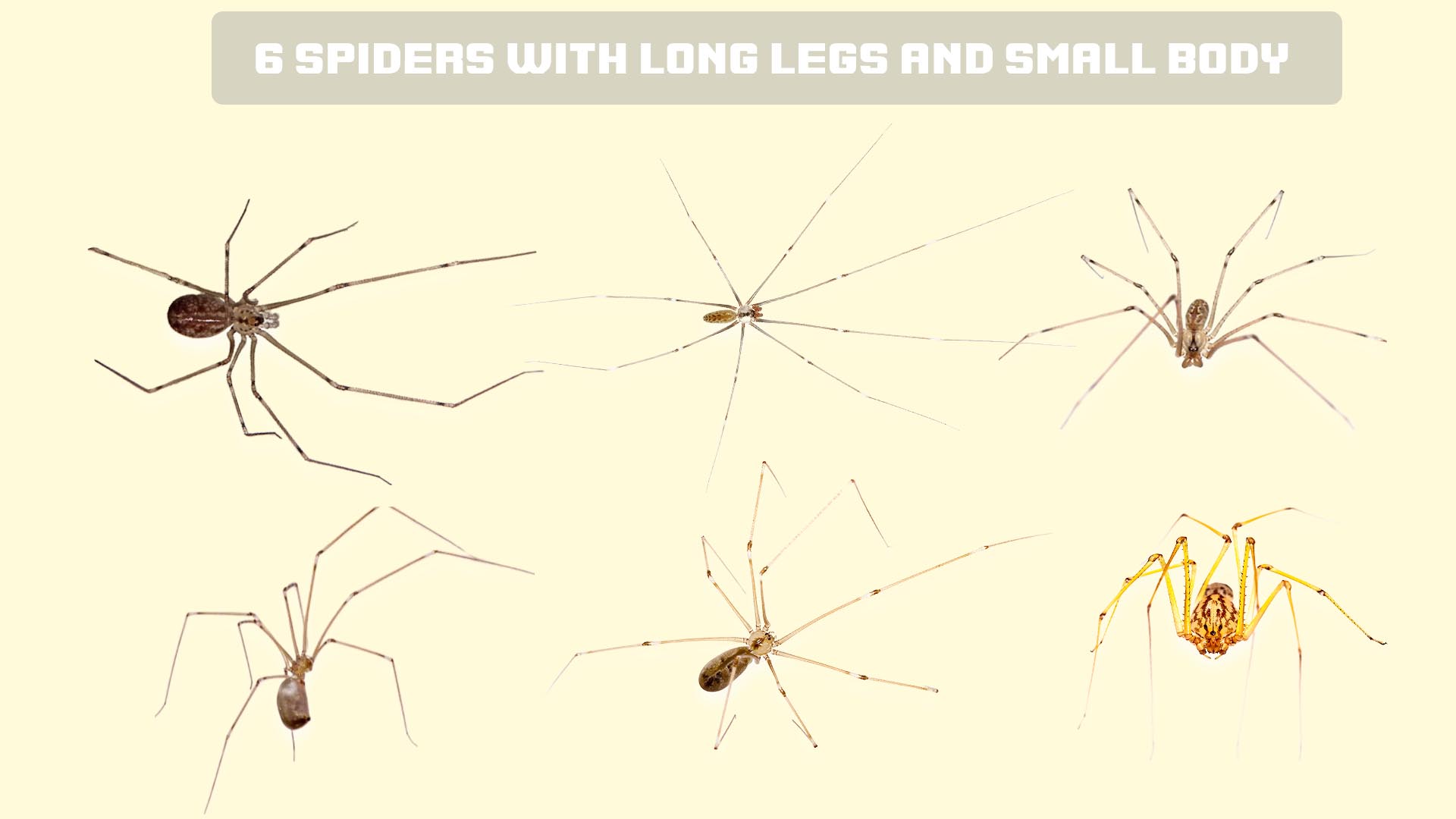California is home to a diverse array of spiders. Among the spiders are several intriguing black species that capture both attention and apprehension. In this article, I shared 13 black spiders that were found in California. Although the spiders are also found in different locations they are mostly found in California.
Black Widow
The notorious Black Widow spider, scientifically known as Latrodectus. It is an arachnid that has both fascinated and frightened humans for centuries.
Recognized by its shiny black body and iconic red hourglass mark. This spider is renowned for possessing powerful venom. The female spider is larger than the male spider and it is particularly infamous for her habit of consuming her mate after mating.
A behavior that has contributed to the spider’s ominous reputation. The spider is found in various parts of the world.
False Widow
The False Widow is found in different areas of the world such as the United Kingdom and parts of Europe. Scientifically the spider is known as Steatoda.
These spiders are often mistaken for the more venomous Black Widow due to their similar appearance. False Widows have adapted well to urban environments, making homes, outbuildings, and garden spaces their habitats.
While their bite is not as venomous as the Black Widow’s. encounters with False Widows have sparked concern. Highlighting the complex relationship between humans and the arachnid world in unexpected corners of the globe.
Brown Widow
The Brown Widow Spider is found in warmer regions across the globe. The spider is mostly found in California, Texas, and Florida.
Recognizable by their brown coloration and distinctive hourglass-shaped markings on the underside of the abdomen. Brown Widows often inhabit human-made structures, such as sheds, garages, and outdoor furniture.
Their adaptable nature and ability to coexist with humans have contributed to their widespread distribution, leading to increased encounters in urban and suburban environments.
Red-Legged Widow
The Red-legged Widow is scientifically classified as Latrodectus bishopi. It is a lesser-known but intriguing member of the widow spider family. As the name suggests, it is characterized by distinctive red or orange coloration on its legs. Setting it apart from other widow species.
Native to the southeastern United States, particularly Florida, these spiders prefer warm and humid environments. Despite their vivid appearance. Red-legged Widows are generally considered less venomous than their infamous relatives.
Their presence in the coastal regions adds a splash of color to the arachnid landscape, inviting both curiosity and caution from those who come across them
.
Steatoda Spider
The Steatoda Spider is commonly known as the False Widow. It has made its presence known in diverse regions across the globe. Originally native to warmer regions such as Madeira and the Canary Islands.
The False Widow has expanded its range due to human activities. It is notably found in the United Kingdom, where it has garnered attention for its increasing numbers and occasional encounters with humans.
Triangulate Cobweb Spider
The Triangulate Cobweb Spider is scientifically named Steatoda triangulosa. The spider is found in various continents including North America, California, and South Africa.
It thrives in both natural settings, such as forests and grasslands. Human-altered landscapes, often inhabiting structures like sheds and barns.
The Triangulate Cobweb Spider’s cosmopolitan distribution reflects its ability to exploit diverse habitats, making it a common sight for those who keenly observe the intricate tapestry of the arachnid world.
Desert Recluse Spider
The Desert Recluse, a spider of the Loxosceles genus, is primarily found in arid regions of the southwestern United States. Its habitat spans the deserts of Arizona, California, New Mexico, and parts of Texas.
Recognized by its brown coloration and distinctive dark violin-shaped mark on its cephalothorax, the Desert Recluse is well-adapted to the harsh conditions of desert environments.
These spiders prefer secluded areas such as woodpiles, rocks, and debris, where they can remain hidden during the day. While their bites are rare, the Desert Recluse’s presence in these arid landscapes adds to the ecological diversity of the region.
Chilean Recluse
The Chilean Recluse, scientifically known as Loxosceles laeta, is predominantly found in South America, with its range extending from Peru to Chile. This venomous recluse spider thrives in a variety of environments, from urban areas to rural landscapes.
Recognizable by its brown coloration and the characteristic violin-shaped mark on its cephalothorax, the Chilean Recluse often seeks shelter in dark, undisturbed spaces. Human encounters with this spider, though infrequent, can lead to bites that may cause necrotic skin lesions.
Chilean Recluse’s adaptability and presence in diverse habitats highlight the challenges of coexisting with venomous wildlife in certain regions.
Arizona Desert Tarantula
The Arizona Desert Tarantula, scientifically known as Aphonopelma chalcodes, is native to the arid regions of the southwestern United States, particularly Arizona. This impressive tarantula species thrives in desert habitats, including grasslands and scrublands.
Recognizable by its large size and dark coloration, the Arizona Desert Tarantula is well-adapted to the extreme temperatures and sparse vegetation of its environment. These tarantulas often create burrows in the soil, where they seek refuge during the day and emerge at night to hunt for prey.
Despite their intimidating appearance, Arizona Desert Tarantulas play a vital role in maintaining the ecological balance of their desert ecosystems.
California Trapdoor Spider
The California Trapdoor Spider, belonging to the genus Ummidia, is native to the western United States, particularly in California. These elusive spiders are well-adapted to the state’s diverse landscapes, ranging from coastal areas to inland habitats.
Recognizable by their burrows capped with a camouflaged trapdoor, these spiders are skilled ambush predators. They spend much of their time concealed in their burrows, waiting for unsuspecting prey to venture close.
California Trapdoor Spiders are integral to the local ecosystem, contributing to pest control and maintaining the delicate balance of their natural habitats. Their ability to adapt to various environments underscores their ecological significance.
California Funnel-web Spider
The California Funnel-web Spider, scientifically classified as Agelenopsis californica, is a common arachnid species found in the state’s diverse ecosystems. Known for its distinctive funnel-shaped webs, this spider constructs elaborate silk structures that serve as both a retreat and a trap for prey.
Widely distributed across California, these spiders can be found in grassy areas, gardens, and other open spaces. The California Funnel-web Spider is an adept hunter, using its web to detect vibrations and movements of potential prey. Its presence contributes to the ecological balance by controlling insect populations, showcasing the intricate role spiders play in maintaining local ecosystems.
California Wolf Spider
The California Wolf Spider, belonging to the family Lycosidae, is a robust and agile arachnid native to the diverse landscapes of California. These spiders are versatile hunters, often seen prowling the ground in search of prey.
With a diverse range of species within the state, California provides an ideal habitat for various types of Wolf Spiders. Recognizable by their robust bodies and keen eyesight, these spiders do not construct webs for catching prey but instead rely on their speed and agility.
The California Wolf Spider plays a crucial role in controlling insect populations, contributing to the delicate balance of the state’s ecosystems.
California Jumping Spider
The California Jumping Spider, belonging to the Salticidae family, is an agile and visually captivating arachnid found across the diverse landscapes of California. These spiders are known for their exceptional jumping abilities, using their powerful hind legs to pounce on prey with precision.
With a wide variety of species inhabiting the state, California provides a range of habitats for these spiders, including gardens, woodlands, and urban areas. Recognizable by their keen eyesight and often vibrant colors, California Jumping Spiders are active hunters, playing a crucial role in controlling insect populations. Their acrobatic feats and charming appearance make them a fascinating component of California’s arachnid fauna.

